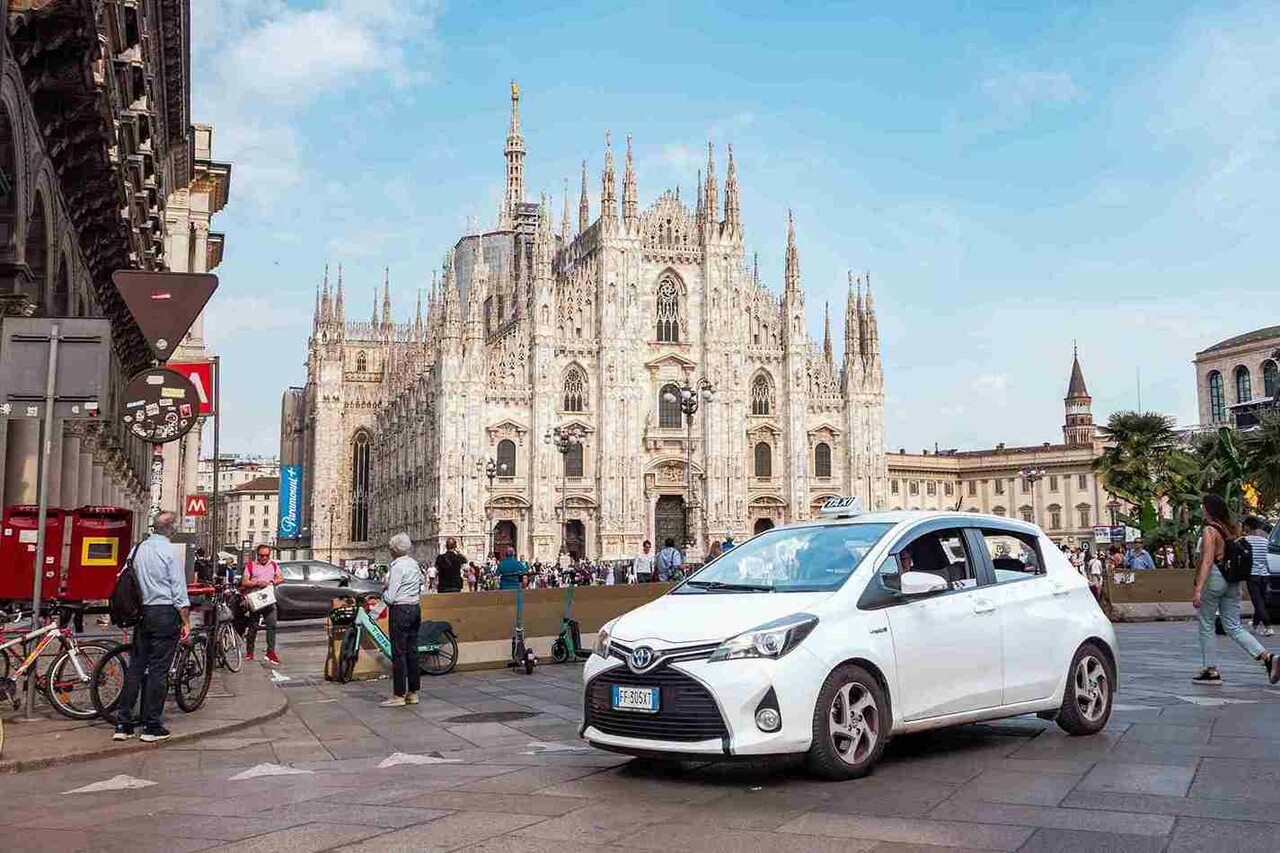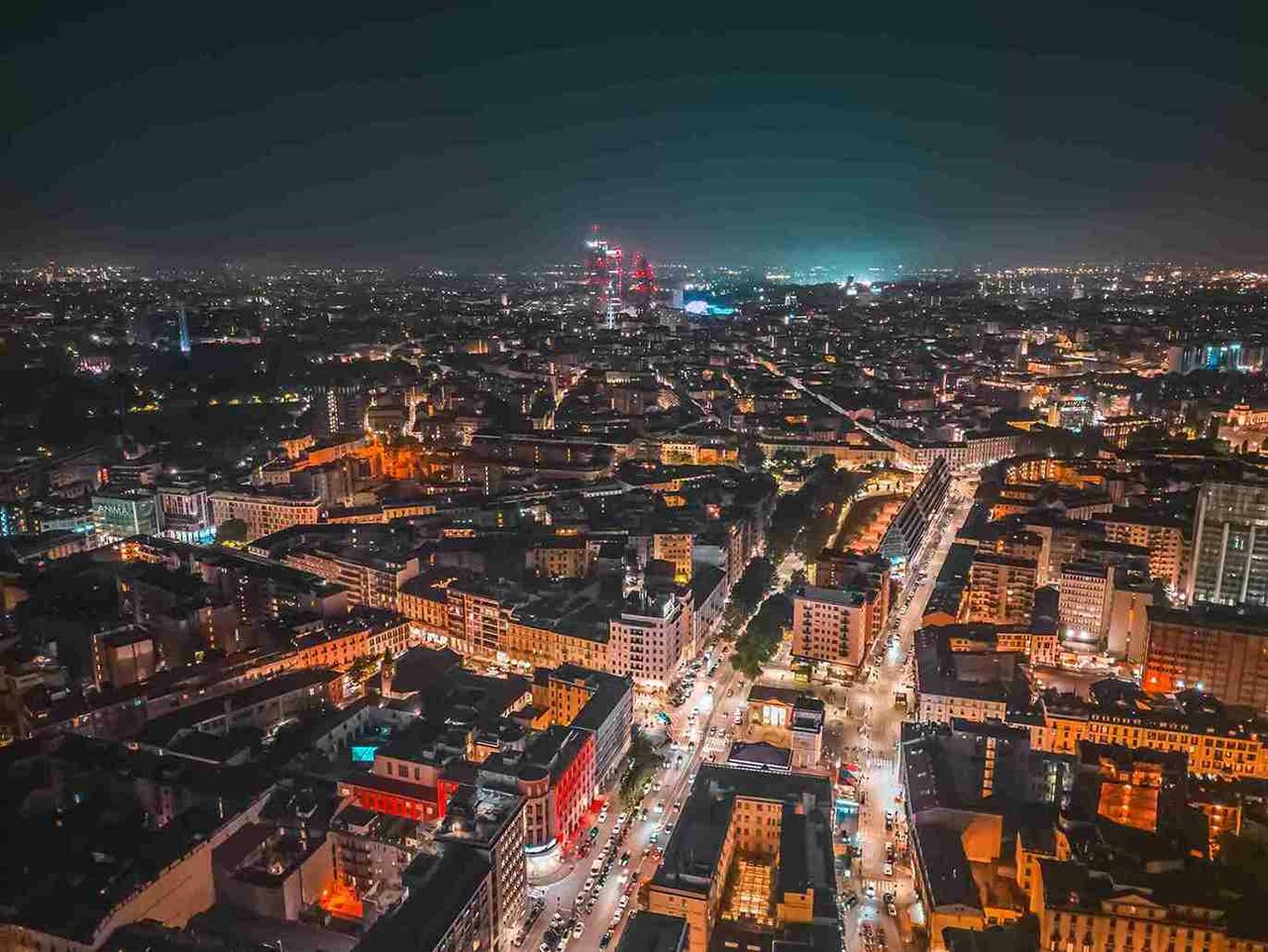Milan, situated in northern Italy, is one of the most famous cities in the world. From its unrivalled fashion shows to its unique coffee culture, Milan is a popular holiday destination for Italians and tourists from around the world. The large city is perfect for exploring by car.
Here at Holiday Cars, we will provide you with some of the best advice on how to drive in Milan and its surrounding areas. Whether it’s road trip inspiration, or simply advice on how to park in the city, we’ve got you covered for your visit to Milan.

How to Plan Your Route and Avoid Traffic in Milan
Driving Rules and Regulations in Italy
Before getting into your hire car and heading off to explore Milan by road, there are several rules and regulations which should be considered beforehand:
General Rules and Regulations
- Cars drive on the right and overtake on the left. Therefore you can expect your car to be a left-hand drive. This is the opposite of the UK, but similar to the majority of other European countries.
- If you are involved in a road traffic accident (RTA) or emergency, then call 118 if you need an ambulance. If you need the police, call 113. For the fire department, call 115.
- The blood alcohol limit in Milan is the same as in the rest of Italy – 0.5g per litre. However, for new drivers – that is drivers under 21 or those who have held their licence for less than three years – this is a zero-tolerance policy, and the blood alcohol level must be 0.0g per litre.
- You must wear a seatbelt at all times when the vehicle is moving. Depending on the severity of the offence, fines can range from €80 to €323 (£66.20 to £267.27).
- Children under 12 years old must sit in the back seats, and they are not allowed in the front seat while the vehicle is being driven.
- In Milan, and indeed in Italy, it is customary for drivers to be given a car with a full tank of fuel. Therefore, it is expected that they return the car with a full tank of fuel, too, so make sure to budget for this.
Speed Limits in Italy
The speed limits in Italy are generally the same – or very similar – to the speed limits in other European countries. It is important to bear in mind that if you are visiting Italy from a country such as the USA or the UK, the speed limit signs are in kilometres per hour, not miles per hour. In this following section, we will include a handy conversion rate to the most common speed limits that you will likely experience in and around Milan and Italy:
- In Milan city centre (as of 1st January 2024): 30km/h (20mph)
- Cities and towns: 50km/h (30mph)
- Single carriageways: 90km/h (55mph)
- Dual carriageways: 110km/h (70mph)
- Motorways: 130km/h (80mph)
It is important to remember that these speed limits can vary with weather conditions, so speed limits on motorways and dual carriageways can be reduced to 110km/h (70mph) and 90km/h (55mph), respectively, in adverse weather conditions such as rain, snow, fog or extreme winds.
How to Navigate Toll Roads in Italy
There are several toll roads near Milan (the A36, A59 and A60 to name just a few), and most of the motorways in Italy are toll roads, too. There are several factors to consider when using toll roads in Italy.
Because most of the motorways in Italy are toll roads, the chances are if you are hiring a car, you will have to drive on at least one Italian motorway before reaching your destination. Smaller cars are usually cheaper than larger cars when it comes to tolls. For an average-sized family car, the price will generally be around €9 per 100km of motorway travelled on.
Another thing to bear in mind is that, unlike the UK, the majority of toll booths in Italy are manually operated, and only accept cash payments, so make sure that you carry some cash (the currency is the Euro) with you in order to be able to pay. Some toll booths now accept card payments, while some even accept mobile payments from pre-paid cards like Revolt or Apple Pay. Either way, the safest option is to carry some cash with you in case you come across a toll booth that does not accept card payments.
Tips for Driving in Milan
Navigation: Because Milan is a popular city, the roads can sometimes become quite congested. Therefore, we recommend that you use a navigation system such as a sat-nav or Google Maps to help find your way around the city and its surrounding areas.

Rush Hours: Avoiding rush hour in the city is the best way to make the most of your driving experience in Milan. Staying off the roads from 07:00–09:00 and 16:00–18:30 Monday to Friday will mean that you will have a much more positive driving experience in the city.
Alcohol Driving Limit: As discussed earlier, the blood alcohol limit is 0.5g/L for all drivers except young or inexperienced drivers, where it is a zero-tolerance policy. The best advice is to not drive at all after consuming alcohol, and instead take a taxi or other form of public transport.
Vehicle Type: Depending on what you are visiting Milan for can have an impact on which type of vehicle you would like to choose to drive. For example, smaller, compact cars are ideal for inner-city driving, but if you are travelling to Milan with your family, then you will need a larger family-sized car. These larger cars are often more fuel efficient, especially when it comes to driving long distances, so if you are planning on doing any road trips, these are the best types of cars to opt for.
Parking Options and Tips in Milan
Parking in Italy
Thankfully, Milan operates the same useful colour-coding scheme that the rest of Italy uses for parking, making identifying certain types of parking spaces easy. Here are the colours and what they mean
- White spaces: This means it is free to park. They are commonly found in shopping outlets or supermarket car parks.
- Yellow spaces: These spaces are reserved for those who have a disabled parking permit.
- Blue spaces: You must pay to park in a blue parking space. Generally, payment is via a nearby parking meter, and prices are usually by the hour.
- Pink spaces: Pink spaces are reserved for pregnant women or those with children under three years old. They are often larger spaces, and closer to shop entrances than other spaces.
Parking in Milan
Milan is a large city, and as such, there is ample parking within the city. There are many public car parks (often multi-storey) which can accommodate hundreds of cars, and payment is usually displayed on an hourly basis.
Car Hire Services and Prices in Milan
There are several car hire companies which operate in and around Milan, including renowned companies such as Budget, Sixt and Avis. There are a range of cars to choose from in their fleets, perfect for all types of travellers – whether you’re a solo traveller or you are travelling with a large group or family. Prices for smaller cars such as the Toyota Aygo range from £28.13 per day, and larger cars like the Nissan Qashqai start from around £48.20 per day.
Milan Airport and Car Hire Facilities
Milan Malpensa Airport is the main airport which handles the most short and long-haul flights coming into Milan (they do have Milan Linate airport too but it is located further away). It is approximately 50km from Milan city centre and can be reached in around 45 minutes by car, depending on traffic. Picking up your car from Milan Malpensa Airport is a good idea, as it is where the majority of the car hire suppliers near Milan are based, and it also gives you both the freedom and the flexibility to go out and explore what Milan and its surrounding areas have to offer you. By booking through a reliable comparison site like HolidayCars.com, you can rest assured knowing that you are getting the very best deals available to you.